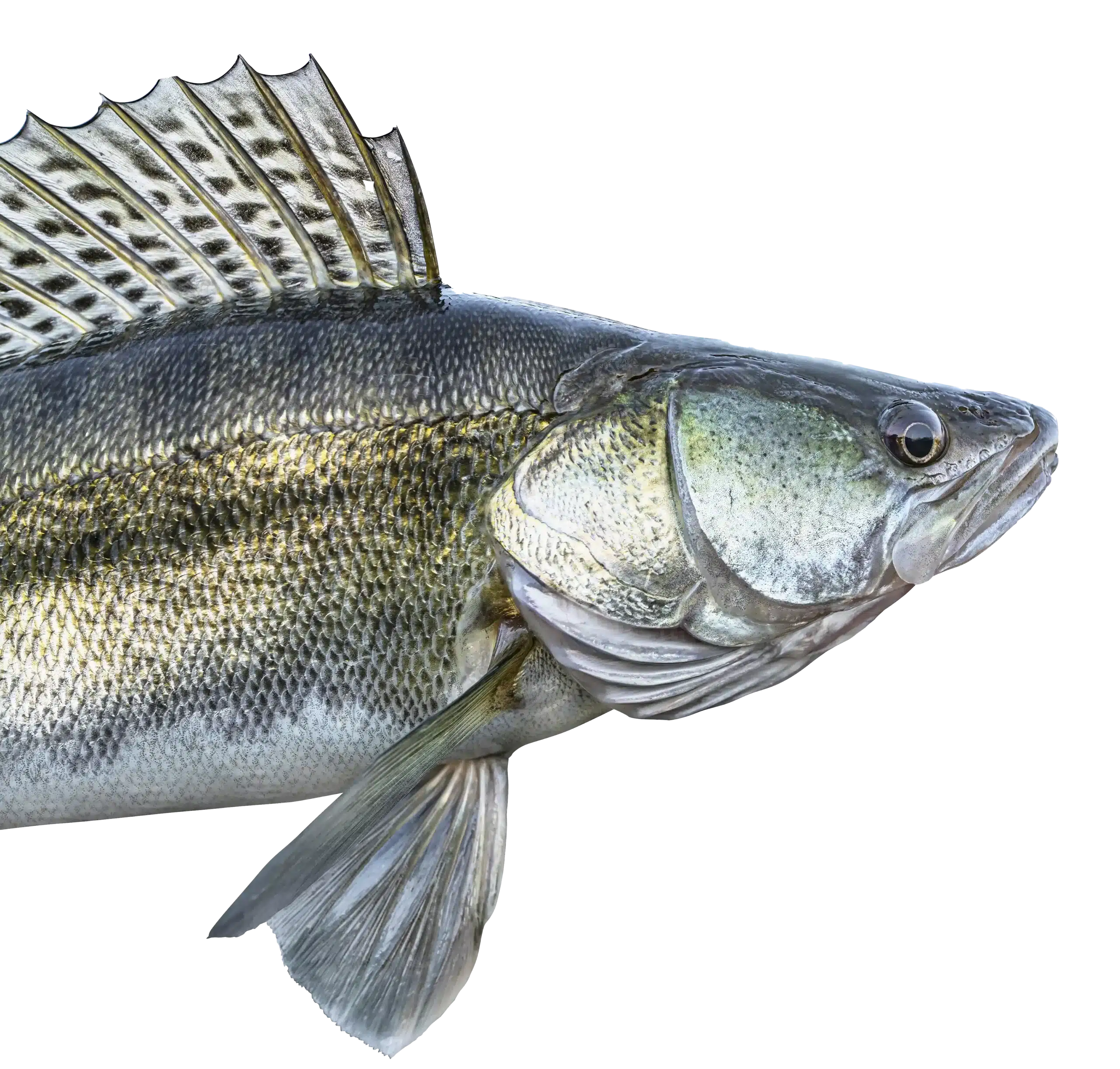
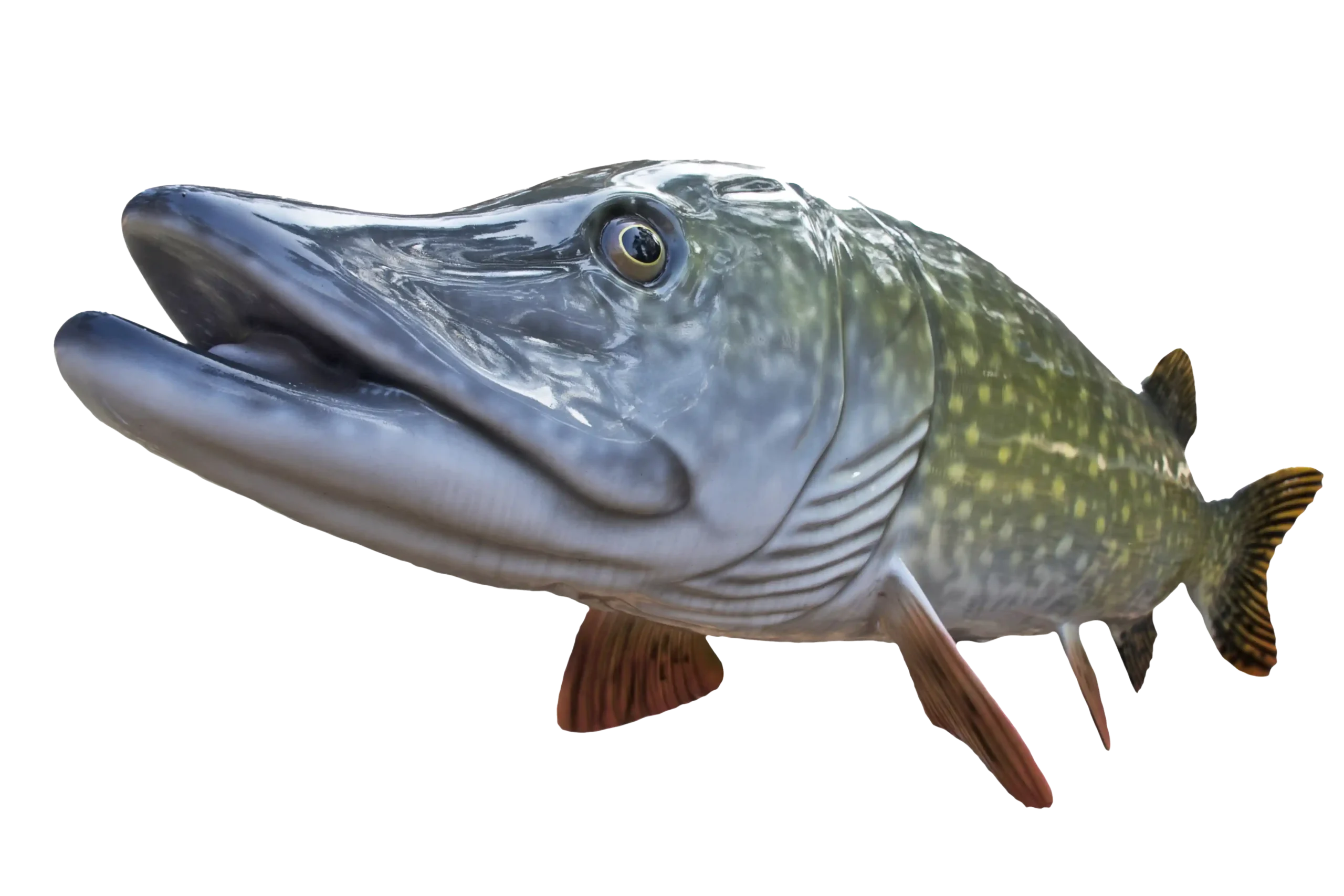

MTT. Minnesota Tournament Trail
NWT. National Walleye Tour
AIM. Angler’s Insight Marketing
Chili Bowl, Border View Lodge
Arnesen’s, Summer Tournament
River Bend Resort, Ladies tournament
Zippel Bay Resort, Northern Pike Tournament
AND MORE!
The Rainy River is one of North America’s most remarkable waterways. Flowing for about 85 miles (137 kilometers), it stretches from Rainy Lake near International Falls to Lake of the Woods and forms part of the border between the United States (Minnesota) and Canada (Ontario). More than just a river, it is a lifeline of history, culture, and nature. For centuries, it has been a travel route, a source of food, and a place where people come together to explore and enjoy the outdoors
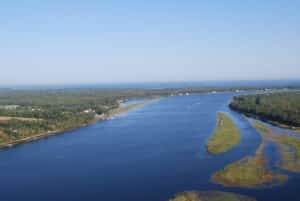
The Shape and Size of the River
The Rainy River is not only long but also wide in many areas. Depending on the location, the river can range from about 500 feet to over half a mile wide. In some stretches, it feels almost like a lake, with broad waters stretching from shore to shore. This wide expanse gives the river a calm, powerful beauty. It also creates many different habitats for fish and wildlife.
The depth of the Rainy River changes as it flows west. Some areas are shallow and fast-moving, especially near the rapids, while other sections are deep and slow. In places, the river reaches depths of more than 25 feet. These deep pools provide cool, dark waters where some of the largest fish in the region live.
A World-Class Fishery
For anyone who loves fishing, the Rainy River is a dream come true. Anglers travel from across North America to cast their lines here. The river is filled with popular species such as walleye, northern pike, smallmouth bass, crappie, and sauger. Lake of the Woods including the Rainy River is known as the Walleye Capital of the World. Walleye fishing is especially famous in the spring and fall when the shiner minnows move into the river from Lake of the Woods and the hungry walleyes and saugers follow them for their fall feed. Catch and Release is practiced during the fall season.
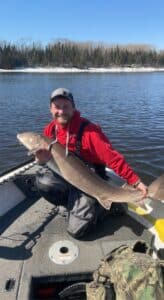
The Rainy River is also home to a truly ancient fish — the lake sturgeon.
Sturgeon are often called “living fossils” because they have been around for millions of years, long before dinosaurs disappeared from Earth. These fish can live for more than 100 years and grow to enormous sizes. Some sturgeon in the Rainy River have been recorded at over 100 pounds, and catching one is considered a once-in-a-lifetime experience. Because of their importance, many sturgeon are caught and released to help protect the population for future generations.
A River of History
Long before highways or railroads, the Rainy River served as a natural transportation route. Indigenous peoples used the river for thousands of years, traveling by canoe to reach villages, hunting grounds, and trading places. Later, European explorers and fur traders, known as voyageurs, paddled the same waters. They carried furs, supplies, and trade goods, using the Rainy River as a key link in their network of rivers and lakes.
As European countries expanded their claims in North America, the Rainy River became part of an international agreement. It was chosen as a section of the border between Canada and the United States, and it remains a dividing line today. On one side lies Minnesota, on the other side Ontario, but both countries share a deep respect for this powerful waterway.
Modern Recreation and Access
Today, the Rainy River is a place for outdoor recreation and community life. Thanks to its many boat landings and public access points, it is easy for people to enjoy the river.
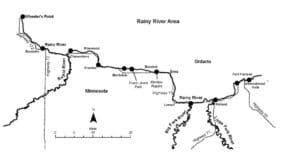
Whether launching a fishing boat, canoe, or kayak, visitors have plenty of starting points to choose from. These access points are found in all along the river, making it simple to plan a day trip or a longer adventure. Check out this diagram showing these great access points.
The wide stretches of water invite boating, while the forested shores offer chances for camping, hiking, and wildlife watching. Bald eagles often soar above the river, while deer and other animals roam the surrounding woodlands. In every season, the Rainy River provides something different: spring brings spawning runs of fish, summer offers warm days for boating and swimming, fall paints the shoreline in brilliant colors, and winter transforms the river into a frozen highway for snowmobiling and ice fishing.
A Treasure for All

The Rainy River is more than just a river; it is a living connection between past and present. Its width, depth, and length make it a unique natural feature, while its fish populations, especially the prehistoric sturgeon, remind us of the mysteries of nature’s history. For centuries, people have traveled, fished, and lived along its banks, from Indigenous communities to modern anglers and explorers.
Today, with its rich history, thriving fishery, and easy access, the Rainy River continues to welcome all who come to experience its waters. Whether you are fishing for walleye, paddling like the voyageurs once did, or simply enjoying the view of a wide, shining river, the Rainy River remains one of North America’s great natural treasures. The old song, “Cruising Down the River” is so appropriate for the Rainy because of it’s wonderful beauty. You can gaze at the beautiful trees and also see beautiful homes that have been built along the shoreline. Enjoy both sides of the river as it showcases two beautiful countries.
For more information see:www.lakeofthewoodsmn.com
Click on the Lodging tab at that same website.
See our Facebook page at: www.facebook.com/lakeofthewoodsmn

